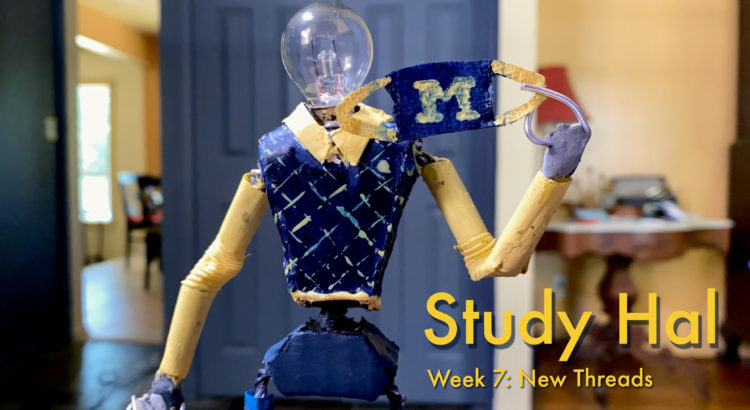Residing in East Quad, RC Players is the Residential College’s own theatre group (though you don’t have to be in the RC to be involved). The organization is student-run, with new shows chosen at weekly meetings led by the executive board. Through RC Players, students get to direct, act, write, produce, and handle tech for various productions throughout the school year. These shows include full-length productions, Evening of Scenes, and Red-Eye, where a show is written from scratch and performed within 24 hours.
Evening of Scenes, or EOS, is a series of original short comedy skits. Like other RC Player shows, the pieces are written, directed, and presented by students. The sketch comedy show is performed at the beginning of each fall and winter semester. This semester’s EOS occurred last weekend, January 31st and February 1st. According to the performance’s facebook event description, the show included a variety of eccentric scenes, from “frat guys running the constitutional convention to the Adpocalypse.”
This semester, I decided to try out for EOS at the last minute, and I’m glad I did. Cast in “Open Call Auditions”, a parody on the Bachelor and its audition process, I played Giselle Evans. The character was a diva “straight off Broadway” who eventually lost her temper and caused drama onstage. Add sassiness, sexual tension, and a verse of “Memory” from Cats to make her character even more memorable. Giselle’s loud, confident demeanor was quite the opposite of my own; yet, that’s what made playing her character so fun. Another thing that I liked about my scene was the awesome ad-libbing that came from my cast mates. Thanks to the liberty granted by our director (you rock, Alexa!), some of the biggest laughs we received were due to witty one-liners not in the script. Whether for transitions or humorous reactions, the improvisation made for a different show each night, as per live theatre in general.


One thing I love about EOS in general is the flexibility. I’m currently not an active member in RC Players, but the show is one of many open to all for involvement. College is a busy time, and amidst classes, jobs, and other extracurriculars, it can be difficult to find the time to dedicate yourself to a full-length show. For someone who loves theatre but doesn’t have enough room in their schedule to take a ton of drama classes or frequently do said full-lengths, EOS is a good compromise. After auditions, there are only two weeks or so of rehearsal before the performances. The people in RC Players are hard-working yet fun and accommodating, so rehearsal times vary depending on the availability of the group. For any RC freshmen or sophomores, living in East Quad makes heading to rehearsal convenient, as you can just walk downstairs (as a reminder, RC Players is set in East Quad).
Prior to last weekend’s EOS, I have been an assistant director for one EOS show and an audience member for the others during my time at college. Whether behind-the-scenes, on-stage, or in the audience, EOS is a blast. I highly recommend to keep your eyes open to opportunities for getting involved or watching EOS and other shows by RC Players.

Want to get involved or learn more about the RC Players? Click this link for their Facebook page!
Photo Credit: Mitchell Salley and RC Players









